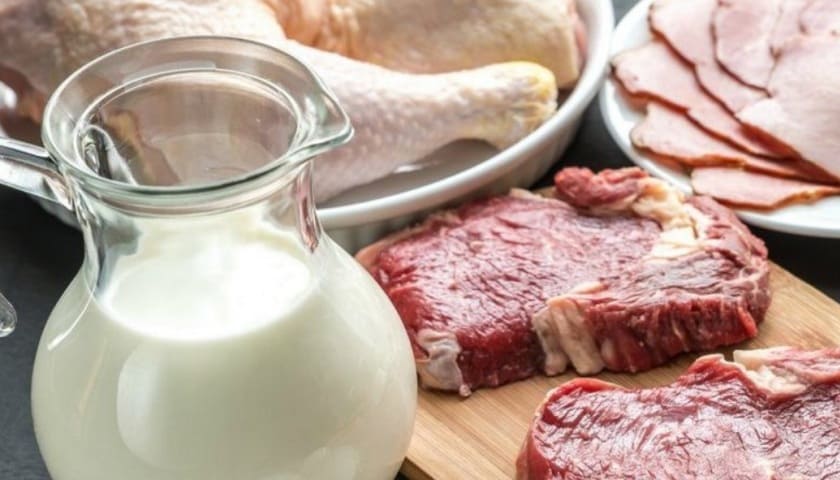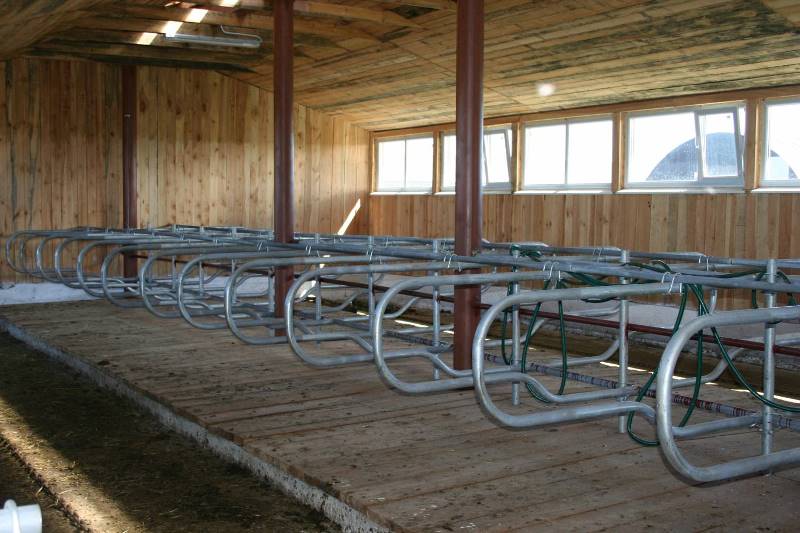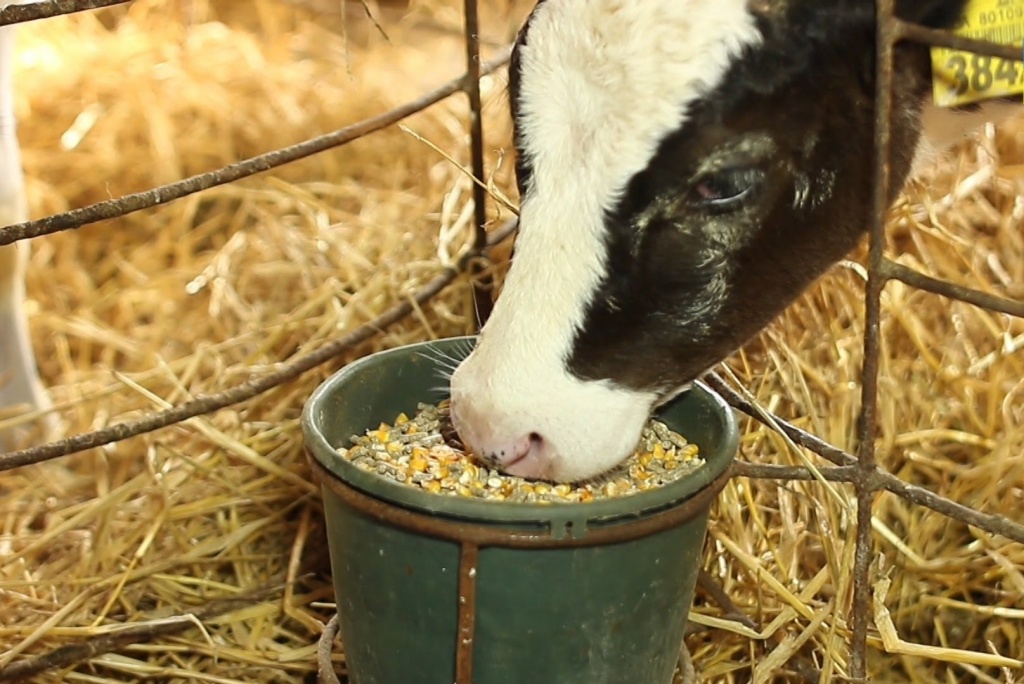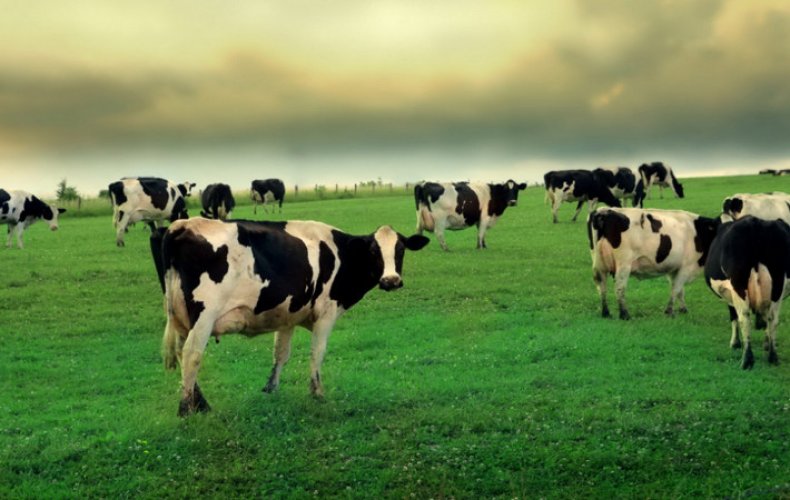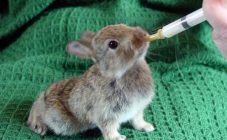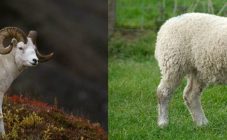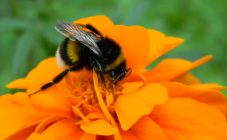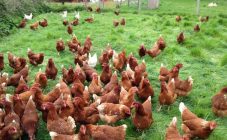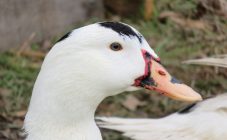Content:
Breeding cows is considered a profitable occupation. However, for a business to be profitable, the right approach to business is important. The farmer must understand how to care for a cow, what vaccinations she needs, how to graze cows, what the average daily weight gain is, etc. Despite the fact that the methods of keeping livestock can be easily learned, the process of raising cattle is quite laborious. The owner of the animals must be ready for physical labor and spending time caring for pets.
Cattle content for beginners
Breed selection
Keeping a cow at home for beginners starts with choosing the direction of productivity. There are breeds from which you get:
- Milk;
- Meat;
- Milk and meat together.
The most common species are dairy and mixed breeds. Home-grown beef cattle are not so popular. It is believed that the profitability of keeping cattle for dairy and dairy-meat cows is higher than for meat ones. Known dairy breeds include:
- Ayshirskaya;
- Yaroslavskaya;
- Kholmogorskaya;
- Dutch;
- Red steppe, etc.
Conditions of detention
Before buying livestock, you should take care of the conditions in which the pets will live. It is very good if the cottage or private house is located in the countryside. Then an insulated barn will do. The mini-farm should be 20-50 meters away from living quarters. The cowshed is insulated so that in the winter season the temperature there does not fall below + 15 ... + 10 degrees. Windows and ventilation are required. But drafts should not be allowed.
The floor is made with a slight slope. Thus, waste will not accumulate under the feet of the animals. For each individual, as well as for a horse, 5-8 meters are allocated. A cow with a calf is allocated 10 meters.
Be sure to have feeders and tanks with clean water. The floor is covered with straw and hay. Every day the litter is changed and the room is cleaned out. In such conditions, keeping cattle will be pleasant.
Feeding
The animal should receive a balanced feed. The diet includes:
- Hay;
- Silage;
- Straw;
- Carrot;
- Potatoes;
- Beet;
- Oilcake;
- Bran;
- Compound feed, etc.
If the settlement is in the countryside, then the food for the cow is taken from their own garden and nearby fields. Accordingly, it is more profitable and convenient to breed cattle in the countryside.
Number of cows in household plots
How many cows can you legally keep on your personal subsidiary farm? Personal or private subsidiary farming (LPH) is not a form of entrepreneurial activity. Its main goal is to provide products to the family that owns the private household plots. To date, the number of heads that a person can keep in their household is not legally limited.
Cattle exterior assessment
To succeed in obtaining milk, meat, you need to choose the right animal. The appearance of a heifer or bull speaks of health and decent performance. Methods for assessing the exterior of cattle are used to identify eligible livestock.Among them, the eye and the photographing method are used. In the first case, the cow is examined on the spot. In the second case, clear photographs of her are provided from certain angles.
Experts assess the appearance most often on a point system. There is also a linear system when a graph is drawn. Whichever method is chosen, the assessment is based on the characteristics of the constitution of the dairy, meat or combination breeds. There is a list of acceptable standards:
- The cattle constitution should be compacted, not rough and not loose.
- The musculature is moderately developed.
- The back is wide.
- The legs are upright, set wide apart for stability.
- The coat is shiny and healthy.
- Another norm is a developed udder with elongated nipples.
- A bad sign of the exterior is various vices. In this case, the cow is recognized as defective.
Cattle care
Keeping cows requires proper care. It includes milking the heifer several times a day, washing the udder and lubricating it with a special cream, cleaning the hooves and fur coats with brushes. At any time of the year, the cow should have a bed of hay and straw.
In the summertime, grazing is organized on the pasture. Thanks to this, the cattle receives all the necessary vitamins, minerals, nutritious food and fresh air. Before grazing cows, you should decide on a place. If you are considering a rural option, then choosing a field will be easy. Any area with a sea of grass will do. A field sown with agricultural crops is absolutely not suitable.
Novice farmers ask themselves the question: "How to graze cows correctly?" There are two ways:
- Free;
- On a leash.
Free grazing involves driving animals to the fields, where the shepherd will look after them. This option is appropriate for rural areas. A village in which many residents have their own livestock usually implies the formation of a herd of cattle.
The second way is to leave the animal at rest. For this, a leash is used. The cattle eats grass only next to the stake to which it is attached. After the plants have been eaten, the cattle is moved to another location. The leash also applies to bulls that are not allowed to approach the milking herd. Thus, the cattle can graze until the evening or the time that the owner determines. It is noteworthy that the city is not suitable for walking cattle.
Veterinary regulations
Every owner is obliged to know the veterinary rules for keeping cattle. This is a set of recommendations, adhering to which you can protect or save pets from various misfortunes. The complex also involves the prevention of diseases:
- You should only enter a cow house in clean shoes and special clothing designed for working with cattle. Thus, the barn will be protected from street infection.
- The premises are cleaned once a day. The manure is taken out and stored in special tanks.
- Every six months, disinfection from insects and rats is carried out.
- The harvested feed does not lie in the barns, as they absorb unpleasant odors. The storage is arranged in an adjacent building.
- The water must be clean.
- Livestock of different ages should be kept in separate rooms.
- Veterinary medicine provides for all preventive vaccinations.
- Vaccinations to prevent viral diseases should be started as soon as the calves are 14 days old. A month-old calf is vaccinated against salmonellosis, parainfluenza, anthrax, etc.
Average daily weight gain of cattle
To keep the cattle from becoming unprofitable, it is necessary to keep records. It consists in measuring the average daily weight gain of the animal. This is necessary in order to adjust the diet if necessary.
Weight gain is the amount by which the weight of a cow or bull increases. Weighing on special scales is carried out every day at the same time. The formula for calculating the weight gain: the weight before weighing is subtracted from the weight after placing the cow on the scales. An experienced Bryansk farmer Valentin weighs in every week. His weight gain formula is as follows: the original weight is subtracted from the current one, and then the result is divided by 7 (the number of days between measurements).
Cattle reproduction
Breeding cattle at home implies the reproduction of animals, even if there is only one cow. Reproduction means reproduction. Economic maturity, at which the heifer must necessarily become pregnant, is celebrated at 13-15 months. Six months before that, her animal instinct wakes up, but early pregnancy is not good for cattle.
An important lesson for the farmer to learn is adherence to the stages of the cattle life cycle. Before calving, it is necessary to launch the animal, to organize dry, transit periods for it. After calving, the cattle enters the service period.
Veterinarian advice
- Whatever breed is a heifer or a bull, competent care is necessary for their health.
- A village or a rural settlement with enough green fields is best suited for breeding cattle.
- The barn should be warm, clean, light, ventilated, but free of drafts.
- Nutrition for cattle is selected balanced.
- Summer housing involves grazing.
- In order for the cows to be healthy, the owner should not give up disease prevention (vaccination) and compliance with veterinary rules for keeping.
- It is important to maintain the productive longevity of cows by adhering to the pet's life cycles. It is necessary to run correctly, take care of the pregnant cow. Do not neglect service, transit periods.
Breeding cattle requires great responsibility from the owner. A lot of time and work is spent on leaving. However, the novice farmer is rewarded with organic products.
